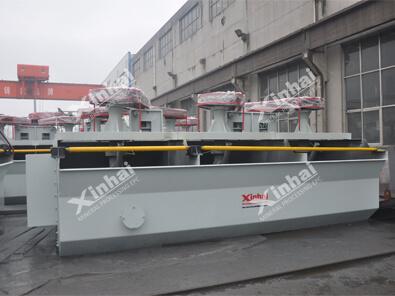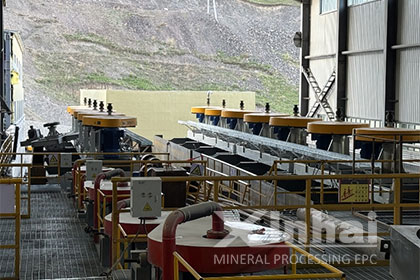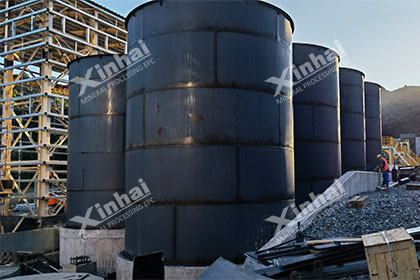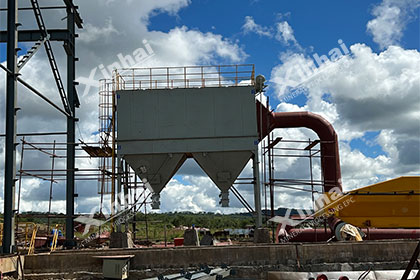Molybdenum Beneficiation Explained
 Chaya
Chaya
 Jan 27, 2022
Jan 27, 2022
 1071
1071
If you want to know more details about equipment, solutions, etc, please click the button below for free consultation, or leave your requirements!
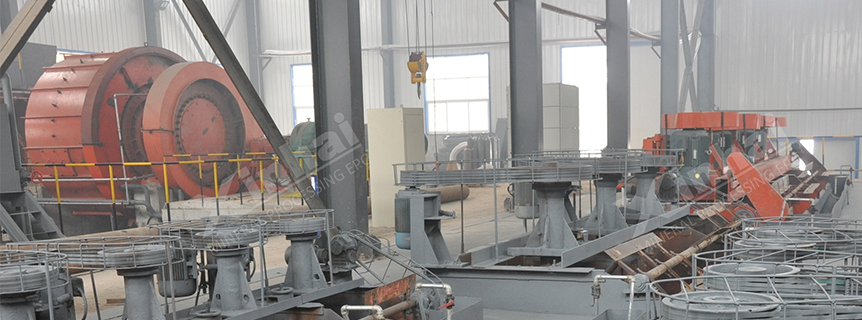
01 Molybdenum Ore Introduction
BackMolybdenum metal has the advantages of high strength, high melting point, corrosion resistance, wear resistance, etc. Molybdenum ore is mainly used as steel reinforcement, toughening and anti-corrosion additives. Molybdenite is the most widely distributed and most industrially valuable molybdenum ore among the known molybdenum-bearing minerals.
According to the ore composition, it is divided into five types: single molybdenum ore, copper-molybdenum ore, tungsten-molybdenum ore, carbonaceous copper-molybdenum ore, vanadium-uranium-molybdenum ore.
02 Molybdenum Beneficiation Methods
BackAccording to the different properties of molybdenum ore, its beneficiation methods are also different. Common molybdenum beneficiation methods include flotation method, floatation-magnetic separation-gravity separation method, flotation-electric furnace method and so on.
(1) Flotation Process
Molybdenite has low hardness, fine embedded particle size, and good floatability. The multi-stage flotation and multiple concentrations are used to produce molybdenum products with high molybdenum grade and less environmental pollution. According to the composition and mineral composition of ores, they can be divided into two categories:
Preferential flotation. It is mainly used for the recovery of primary molybdenum, and is suitable for the treatment of molybdenum ores that do not contain (or less) copper and lead sulfide ore, such as single molybdenum ore, tungsten-molybdenum ore, iron-molybdenum ore, etc.
Mixed flotation. The mixed flotation process is mainly used for the recovery of by-product molybdenum and is suitable for the treatment of molybdenum ore containing copper or lead sulfide minerals, such as copper-molybdenum ore, lead-molybdenum ore, etc.
(2) Floatation-Magnetic Separation-Gravity Separation
More than one-third of the world's molybdenum production comes from by-product recovery from other polymetallic mines. For associated molybdenum ores, especially iron-bearing molybdenum ores, the combined magnetic-gravity separation process is used. A variety of minerals can be separated at the same time, which improves the utilization rate of resources.
(3) Flotation-Electric Furnace Method
It can be used for intergrown molybdenum ore containing precious metals, such as platinum and palladium.
03 Molybdenum Beneficiation Flow and Equipment
BackThe flow steps mainly contain crushing, grinding, ore washing and classification, flotation and dewatering.
(1) Crushing
The rough molybdenum ore is crushed to a reasonable fineness by the jaw crusher for coarse crushing, secondary crushing, and fine crushing, and then sent to the silo through the hoist.
(2) Grinding
The ore is evenly fed into the ball mill by the feeder.
(3) Ore Washing and Classification
Using the spiral classifier, the ore mixture is washed and classified by the principle that the solid particles of different specific gravity in the ore powder have different sedimentation rates in the liquid.
(4) Flotation
The washed and classified mineral is stirred evenly by the agitation tank and then sent to the flotation machine, and the corresponding flotation reagents are added according to the characteristics of different mineral components to separate the required components from other impurities.
(5) Dewatering
After flotation, the mineral concentrate has high water content, and it is necessary to use a high-efficiency thickener to reduce the concentrate moisture to the national standard.
04 Difficulties in Molybdenum Beneficiation
BackSlime has a great influence on the flotation of molybdenite, and high mud content is not conducive to improving the grade of molybdenum concentrate.
First, the raw ore contains a large amount of argillaceous minerals, such as chlorite, talc, diopside, amphibole, etc. This kind of molybdenum ore with non-quartz as the main gangue is prone to produce slime during grinding, which has a great influence on the concentrate grade.
Second, molybdenite (with quartz as the main gangue) is embedded with molybdenum ore with fine particle size or encapsulation phenomenon. Such ore is often relatively fine in the first grinding stage, while multi-stage grinding is required in the beneficiation. It will produce a large amount of secondary sludge, which also has a great impact on the concentrate grade.
In view of the problem that it is difficult to improve the concentrate grade of refractory molybdenum ore, we need to strengthen the dispersion and inhibition effect of argillaceous minerals and strengthen the collection of molybdenite through chemicals.
05To Sum Up
BackThese are the introduction of molybdenum beneficiation. We can provide mineral mining and processing solutions, from A to Z. If you have any question, welcome to leave a message to us or contact our online service.
 +86 183 3575 8886
+86 183 3575 8886 pinklaurabao@gmail.com
pinklaurabao@gmail.com




 Message
Message Chat Now
Chat Now


